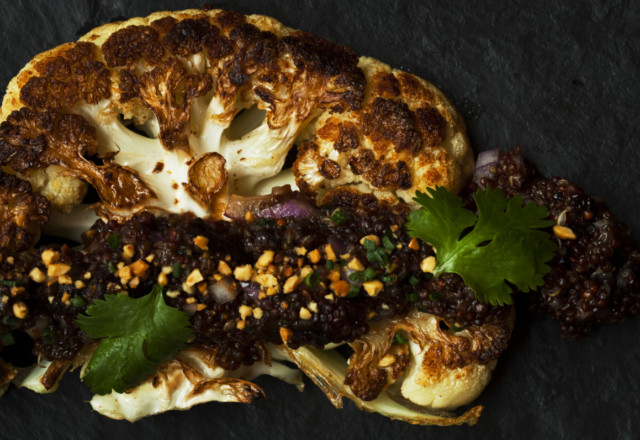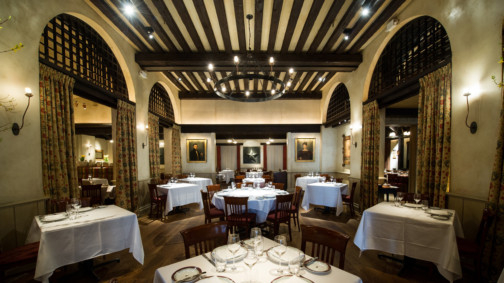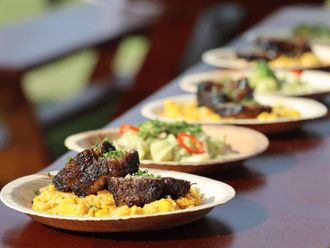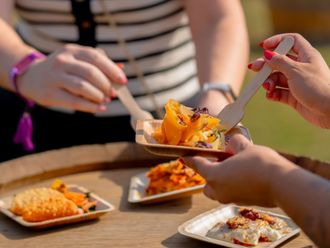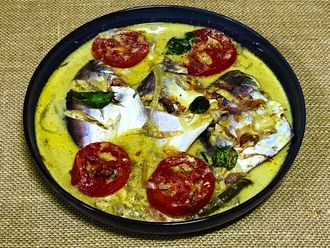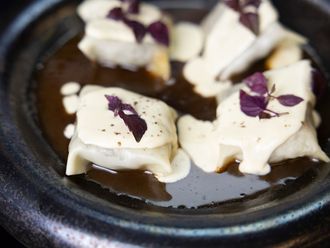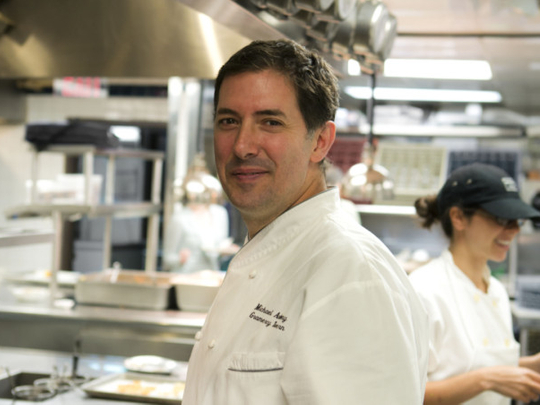
Award-winning American chef Michael Anthony knows that even a great restaurant needs to reinvent itself with fresh ideas, a philosophy he shares along with seasonal recipes in The Gramercy Tavern Cookbook.
It is the first cookbook by the chef of the Michelin-star Gramercy Tavern restaurant in New York that is known for its upscale American cuisine.
The 45-year-old chef, who was born in Cincinnati, talks about the book and the restaurant that will be 20 years old next year.
How does the book capture you as a chef?
Literally it captures where we are right now ... we want to invite people to enjoy the pleasure of eating seasonal and local foods. We didn’t want to create a mantra. We want to welcome people to the idea that searching for these great fresh ingredients, kind of opening up the awareness about how explosive flavours could be.
What has made Gramercy Tavern successful and still relevant almost 20 years later?
This restaurant has great bones, meaning it has a great system and timeless designs. It has people who had thought about the work space that makes it workable and efficient today. It had a lot of firsts in the early days. It conquered a new territory. It carved out a new niche.
So the years have gone and the restaurant has evolved. It has continued to get better so it has good bones to grow on.
To sum it up another way, a restaurant is a not a piece of artwork. You can’t create it and dust it off and continue to enjoy it. It has to change. It has to constantly be reinvented.
How would you compare your restaurant with newer ones?
Young restaurants are sometimes frantic. But restaurants which are three to four years old have a yearning to exceed your expectations. You’ve worked out the kinks of a brand new restaurant.
Most restaurants that are older than that tend to be a little overconfident. If they are standing, they are doing something right.
Gramercy Tavern has a feel of a two, three-year-old restaurant that’s yearning to exceed people’s expectations and winning over people who are here for the very first time.
How has fine-dining changed since Gramercy Tavern opened?
We don’t lean on traditional luxury ingredients like restaurants did 20 years ago. Caviar, foie gras and truffles were a great way to share with New Yorkers who may have thought they were inaccessible before the 1990s. In the 1990s, this restaurant and others gave them full permission without all the pretension to engage in eating all that kind of delicious foods.
These days, we translate that luxury into knowing who grows that food, where it comes from, how much work, hopes and dreams that went into preparing that food just to get it to our table.
So knowing the name of the person who grows that food, having a connection and a transparent story is sort of a new way of describing the luxury of eating.
Shouldn’t it be the standard that any quality restaurants buy from local farmers and producers now?
I would expect any great restaurant to have intimate relationships with excellent regional growers. Any diner should expect that of any good restaurant.
Cauliflower with Quinoa, Prunes, and Peanuts
Servings 4
Ingredients
3 tbs olive oil
1/4 red onion, minced
1 shallot, minced
1 garlic clove, minced
1/2 cup quinoa
2 cups vegetable broth or water
1 sprig thyme
Salt and pepper
1 head cauliflower
1/3 cup finely diced prunes
2 tbs chopped unsalted roasted peanuts, plus 1 tbs crushed nuts
1 tbs onion puree
1 tbs unsalted butter
2 tbs finely chopped cilantro, plus a handful of whole leaves for garnish
1 tbs finely chopped chives
Steps
Preheat the oven to 204 degree Celsius. In a small saucepan, heat 1 tablespoon of the oil over medium-low heat. Add the onion, shallot, and garlic and cook, stirring often, until the onion is softened, about 5 minutes. Add the quinoa and toast, stirring constantly, for about a minute.
Increase the heat to high, add 1 cup of the broth and the thyme, season with salt and pepper, and bring to a simmer. Cook, covered, until almost all the liquid has been absorbed, about 15 minutes. Remove from the heat and let stand for 5 minutes.
Discard the thyme sprig. Trim the stem of the cauliflower so that the head sits flat on a cutting board. Cut down through the centre of the head, making 4 thick slices.
Most of the slices will still have a bit of stem attached and that’s good. Heat 2 tablespoons of the olive oil over medium-high heat in the largest skillet you have. Working in batches, brown the cauliflower slices on both sides, about 3 minutes per side. Transfer to a baking pan. Season the cauliflower with salt and pepper, transfer to the oven, and roast until tender, about 15 minutes.
Add the prunes, chopped peanuts, and onion puree to the quinoa and gently heat through, stirring. Add the remaining 1 cup broth to moisten the quinoa, then stir in the butter and chopped cilantro. Season with salt and pepper.
Lay the cauliflower slices on plates and spoon the quinoa on top. Sprinkle with the crushed peanuts, chives, and cilantro leaves.
Onion Puree (makes about 1/2 cup)
Ingredients
2 tbs olive oil
1 onion, very thinly sliced
1 tbs vinegar
Salt and pepper
Steps
In a medium saucepan, heat the oil over medium-low heat.
Add the onions and cook, stirring often, until they are completely soft but have not taken on any colour, 15 to 20 minutes. A bit of water helps here.
Add the vinegar and cook for 5 more minutes. Season with salt and pepper. Transfer to a blender and process until satiny-smooth.
The puree can be cooled, covered, and stored in the refrigerator for up to 2 days.



